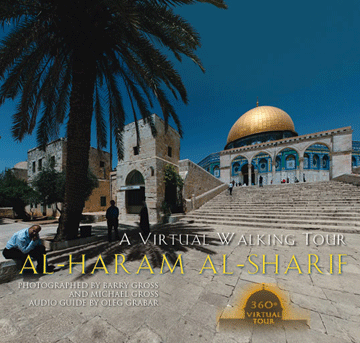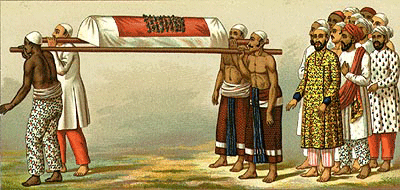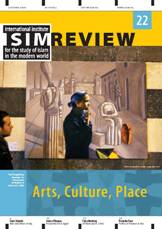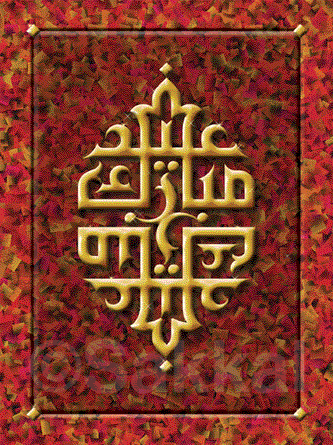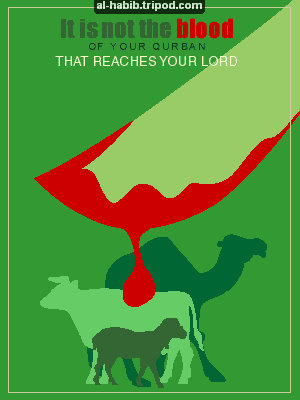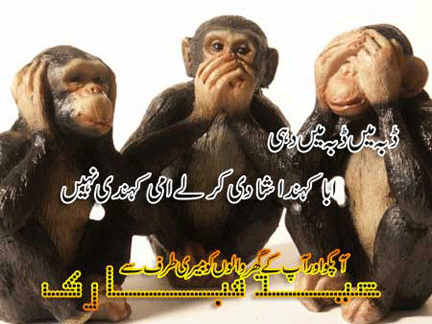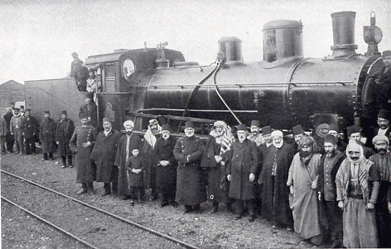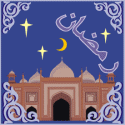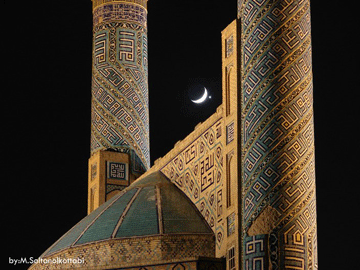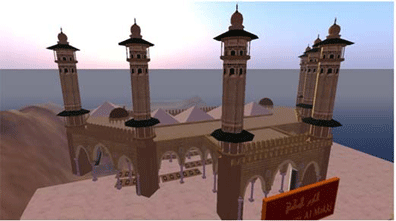
Aerial View of the Masjid Al-Haram, Second Life
Hajj on Second Life
by Krystina Derrickson, excerpt from Second Life and The Sacred: Islamic Space in a Virtual World, Digital Islam, 2008. For the full article, click here.
Mecca is the holiest site in the Muslim world, the literal nexus of the Islamic universe, the direction towards which Muslims worldwide pray and are buried facing, and the figurative, spiritual, and philosophical nexus, flattening history, faith, practice, and praxis[41]. It is the home of the Ka’baa, a large cubical structure believed to have been built by Ibrahim and Isma’il. The Hajj is the pilgrimage, one of the five pillars of the Islamic faith, required at least once by all able-bodied Muslims undertaken during the month long Hajj period.
The Hajj sim is sponsored by IslamOnline.net (IOL), a popular and comprehensive Islamic website run by Egyptian Islamic scholar Yusuf Al-Qaradawi which offers a multitude of services, from e-fatwas, halal business directories, news, and multimedia to matrimonial services and a “cyber-counselor”.[42] Continue reading Hajj on Second Life
